
The Enchanting Heart of Krakow: Stare Miasto (Old Town)
Discover the timeless charm of Stare Miasto in Krakow, Poland – a UNESCO World Heritage Site filled with medieval architecture, bustling market squares, and rich cultural history.
Stare Miasto, or Old Town, is the vibrant heart of Krakow, Poland. This historic district is a UNESCO World Heritage Site, known for its stunning medieval architecture, bustling market squares, and rich cultural heritage. As you stroll through the cobblestone streets, you'll be transported back in time, surrounded by beautifully preserved buildings and landmarks that tell the story of Krakow's past. One of the main attractions in Stare Miasto is the Rynek Główny, the largest medieval market square in Europe. Here, you can visit the iconic Cloth Hall, where merchants have traded goods for centuries, and the towering St. Mary's Basilica, with its stunning Gothic architecture and famous wooden altarpiece. Don't miss the chance to hear the hourly trumpet call from the basilica's tower, a tradition that dates back to the Middle Ages. The Old Town is also home to the Wawel Royal Castle, a symbol of Polish pride and history. This impressive complex includes the Wawel Cathedral, the final resting place of many Polish kings and national heroes, and offers breathtaking views of the Vistula River. As you explore the castle's chambers and courtyards, you'll gain insight into the lives of Poland's royalty and the country's rich cultural heritage. In addition to its historical sites, Stare Miasto boasts a vibrant atmosphere with numerous cafes, restaurants, and shops. Enjoy a traditional Polish meal at one of the many charming eateries, or relax with a coffee while people-watching in the lively market square. The Old Town also hosts various cultural events and festivals throughout the year, making it a dynamic and ever-changing destination for visitors.
Local tips in Stare Miasto (Old Town)
- Visit early in the morning or late in the evening to avoid crowds at popular sites like Rynek Główny and Wawel Castle.
- Take a guided tour to learn fascinating historical facts and stories that you might miss exploring on your own.
- Wear comfortable shoes, as the cobblestone streets can be uneven and tiring to walk on.
- Try traditional Polish dishes like pierogi and zapiekanka at local eateries for an authentic culinary experience.
- Check the local event calendar, as Stare Miasto often hosts cultural festivals, markets, and performances.
The Enchanting Heart of Krakow: Stare Miasto (Old Town)
Stare Miasto, or Old Town, is the vibrant heart of Krakow, Poland. This historic district is a UNESCO World Heritage Site, known for its stunning medieval architecture, bustling market squares, and rich cultural heritage. As you stroll through the cobblestone streets, you'll be transported back in time, surrounded by beautifully preserved buildings and landmarks that tell the story of Krakow's past. One of the main attractions in Stare Miasto is the Rynek Główny, the largest medieval market square in Europe. Here, you can visit the iconic Cloth Hall, where merchants have traded goods for centuries, and the towering St. Mary's Basilica, with its stunning Gothic architecture and famous wooden altarpiece. Don't miss the chance to hear the hourly trumpet call from the basilica's tower, a tradition that dates back to the Middle Ages. The Old Town is also home to the Wawel Royal Castle, a symbol of Polish pride and history. This impressive complex includes the Wawel Cathedral, the final resting place of many Polish kings and national heroes, and offers breathtaking views of the Vistula River. As you explore the castle's chambers and courtyards, you'll gain insight into the lives of Poland's royalty and the country's rich cultural heritage. In addition to its historical sites, Stare Miasto boasts a vibrant atmosphere with numerous cafes, restaurants, and shops. Enjoy a traditional Polish meal at one of the many charming eateries, or relax with a coffee while people-watching in the lively market square. The Old Town also hosts various cultural events and festivals throughout the year, making it a dynamic and ever-changing destination for visitors.
Iconic landmarks you can’t miss
Rynek Główny
Discover the vibrant atmosphere of Rynek Główny, Kraków's historic main square, filled with stunning architecture, local cuisine, and cultural experiences.

St. Mary's Basilica
Explore the awe-inspiring St. Mary's Basilica in Kraków, a gothic architectural marvel filled with art, history, and cultural significance.

Stary Kleparz
Discover the rich flavors and vibrant culture at Stary Kleparz, Kraków's historic farmers' market offering fresh produce and local delicacies.

Sukiennice
Explore Sukiennice, Kraków's iconic Cloth Hall, a museum showcasing Poland's rich art heritage amidst the vibrant atmosphere of the Main Market Square.

St. Florian's Gate
Discover the medieval charm of St. Florian's Gate in Kraków, a stunning historical landmark that opens the door to the city's rich heritage.

Rynek Underground Museum
Uncover Kraków's vibrant history at the Rynek Underground Museum, an immersive experience revealing the city's past beneath the Market Square.

Kraków Barbican
Explore the Kraków Barbican, a stunning medieval fortress and a gateway to the rich history of Kraków's Old Town.

Bazylika Franciszkanów św. Franciszka z Asyżu
Discover the stunning Basilica of Francis of Assisi in Kraków, a masterpiece of art and architecture that offers a serene escape in the city's heart.

Historical Museum of the City of Kraków
Explore the captivating history of Kraków through engaging exhibits and stunning artifacts at the Historical Museum of the City of Kraków, located in the city center.
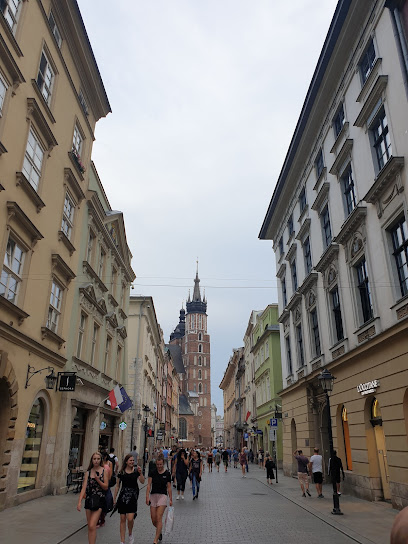
Lost Souls Alley
Experience the thrill of Lost Souls Alley, a haunting amusement center in Kraków, blending eerie fun and immersive storytelling for all ages.

Plac Wszystkich Świętych
Discover the historical charm and vibrant culture of Kraków at the enchanting Plac Wszystkich Świętych, a picturesque square in the heart of the city.

Town Hall Tower
Discover the Town Hall Tower in Kraków, a stunning Gothic landmark offering panoramic views and a glimpse into the city's rich history.

Adam Mickiewicz Monument, Kraków
Discover the cultural heart of Kraków at the Adam Mickiewicz Monument, a tribute to Poland's literary genius in the bustling Main Market Square.

Old Town of Kraków
Explore the enchanting Old Town of Kraków, a UNESCO World Heritage site filled with medieval architecture, vibrant culture, and rich Polish history.

Eros Bendato
Discover the iconic Eros Bendato sculpture in Kraków, a captivating blend of modern art and historical charm that enchants every visitor.

Unmissable attractions to see
Rynek Główny
Explore Rynek Główny, Kraków's vibrant main square, filled with historical architecture, lively markets, and a rich cultural atmosphere.

Wawel Dragon
Explore the legendary Wawel Dragon in Kraków - a captivating monument filled with history, myth, and breathtaking views.

St. Mary's Basilica
Explore St. Mary's Basilica, a Gothic masterpiece in Kraków, featuring stunning architecture, vibrant history, and a unique cultural experience.

Sukiennice
Explore Sukiennice, the iconic Cloth Hall in Kraków, where history, culture, and local craftsmanship come together in a vibrant marketplace.

St. Florian's Gate
Explore the iconic St. Florian's Gate, a historic gateway to Kraków's Old Town, where medieval charm meets vibrant city life.

Rynek Underground Museum
Unearth the rich history of Kraków at the Rynek Underground Museum, where the past comes alive beneath the city's bustling square.

Historical Museum of the City of Kraków
Explore the rich history of Kraków at the Historical Museum of the City, showcasing captivating exhibitions and artifacts reflecting the city's vibrant past.

Town Hall Tower
Discover the historic Town Hall Tower in Kraków, a captivating museum that offers stunning views and a deep dive into the city's rich past.
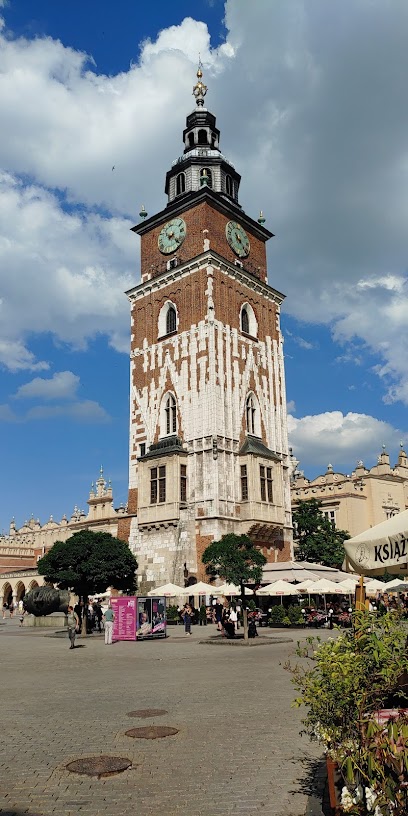
Adam Mickiewicz Monument, Kraków
Experience the cultural heart of Kraków at the iconic Adam Mickiewicz Monument, a tribute to Poland's literary legacy in the vibrant Main Market Square.

Bonerowska House
Explore the historic Bonerowska House in Kraków's bustling Old Town, a captivating blend of architectural beauty and rich cultural heritage.

Essential places to dine
Szalone Widelce
Experience the delightful fusion of European and Polish cuisine at Szalone Widelce – a family-friendly gem in the heart of Kraków.

Sioux
Discover Sioux: An exquisite American steakhouse in Kraków offering delicious cuisine in a vibrant atmosphere.

Restauracja Sukiennice
Experience authentic Polish and Czech cuisine at Restauracja Sukiennice in Kraków's vibrant main square.

Kogel Mogel
Discover Kogel Mogel in Kraków for an authentic taste of Polish cuisine within a charming atmosphere that celebrates local traditions.

Stodoła
Savor authentic Polish flavors at Stodoła – a charming restaurant in Kraków's historic heart.
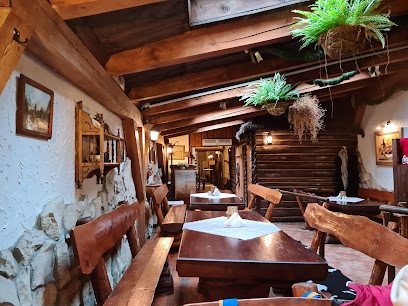
Pod Aniołami Restaurant
Discover the heart of Poland through authentic dishes at Pod Aniołami Restaurant in Kraków's historic center.

Szara Gęś w Kuchni Restaurant
Discover authentic Polish cuisine at Szara Gęś w Kuchni, where tradition meets modern culinary artistry in the heart of Kraków.

Old Town Restaurant and Wine Bar
Experience exquisite Polish cuisine paired with fine wines at Kraków's charming Old Town Restaurant and Wine Bar.

Taj Kraków Stare Miasto
Discover the essence of Thailand in Kraków at Taj Kraków Stare Miasto – where authentic flavors meet exquisite dining.

Albertina Restaurant & Wine
Experience exquisite modern European and Polish cuisine at Albertina Restaurant & Wine in the heart of Kraków's Stare Miasto.
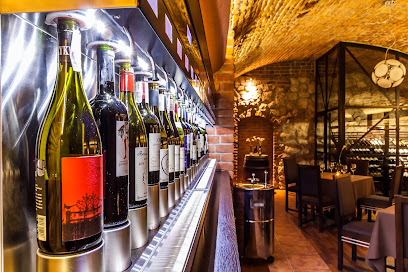
Markets, malls and hidden boutiques
Vitkac Kraków
Explore Vitkac Kraków, where luxury shopping meets exquisite dining in the heart of the historic city, creating an unforgettable experience.

ZARA
Discover stylish apparel and accessories at ZARA, situated in the vibrant Rynek Główny, Kraków's historic main square.

Art & Craft Store
Discover unique souvenirs and authentic Polish artistry at the Art & Craft Store in the heart of Kraków's historic district.

Krakow Souvenirs
Explore Krakow Souvenirs for authentic Polish crafts, unique gifts, and outdoor sports gear, all capturing the essence of this enchanting city.

Krakow Souvenirs Grodzka 13
Explore Krakow Souvenirs on Grodzka 13 for unique Polish crafts and mementos that capture the heart of Krakow.
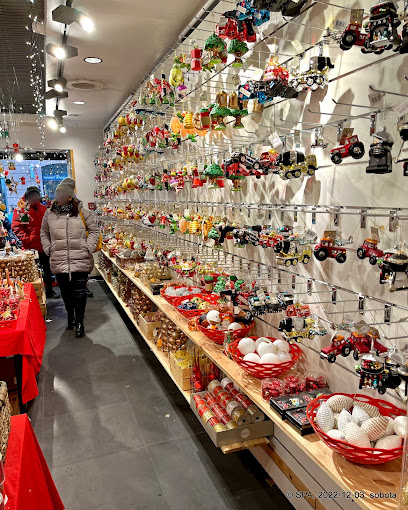
I love Krakow
Explore the charm of Krakow at I Love Krakow, a must-visit souvenir store filled with unique treasures and local crafts.

Sklep Sukiennice s.c. Rękodzieło Sztuka Ludowa
Explore Sklep Sukiennice: Your destination for authentic Polish handicrafts and vibrant folk art in the heart of Kraków's historic square.

Kram s.c. Michałek W., Bęben A.M., Jachna I.
Discover unique Polish gifts and souvenirs at Kram s.c. Michałek W., Bęben A.M., Jachna I. in the heart of Kraków's historic Old Town.

Polish Tradition
Explore Polish Tradition in Kraków – your gateway to authentic souvenirs and charming local craftsmanship.

Szlak MM. Studio ceramiczno - handlowe. Marklowski M.
Explore unique handcrafted ceramics and gifts in Kraków's charming Szlak MM gift shop, a hub of Polish artistry and culture.

Vintage store krakow
Explore Kraków's Vintage Store for unique treasures and nostalgic finds that reflect the charm and history of the city.

La Mania Pasaż 13 Kraków
Explore the unique style of La Mania, a boutique in Kraków offering fashionable clothing and accessories that embody Polish elegance.

Essential bars & hidden hideouts
House of Beer
Experience the vibrant craft beer culture of Kraków at House of Beer, where a diverse selection and delicious food await you.

Piwnica Pod Baranami
Experience the rich cultural heritage of Kraków at Piwnica Pod Baranami, a unique cocktail bar offering delightful drinks and live entertainment.

BaniaLuka
Discover the vibrant nightlife at BaniaLuka, Kraków's cozy pub offering an extensive drink menu and a lively atmosphere.

Ambasada Śledzia
Experience the authentic taste of Poland at Ambasada Śledzia, a gastropub in Kraków renowned for its herring dishes and vibrant atmosphere.

Bulldog
Experience Kraków's nightlife at Bulldog, a lively bar with live music, delicious small plates, and a welcoming atmosphere in the city center.

Harris Piano Jazz Bar
Experience the vibrant jazz scene at Harris Piano Jazz Bar, a must-visit for music lovers seeking a cozy atmosphere and exquisite Italian cuisine in Kraków.

Dobry Kumpel
Discover the heartbeat of Kraków nightlife at Dobry Kumpel, where cocktails, live music, and history collide for an unforgettable experience.

Movida | Cocktail Bar
Experience the artistry of cocktails at Movida Cocktail Bar, a vibrant hotspot in Kraków's Stare Miasto, perfect for socializing and unwinding.
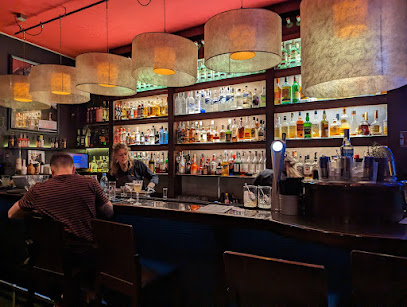
Lastriko
Experience the vibrant atmosphere of Lastriko, a bistro and club in Kraków, offering delicious cuisine and exciting nightlife in one dynamic venue.
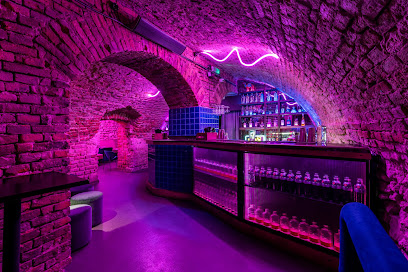
Budda cocktail bar
Experience Kraków's vibrant nightlife at Budda Cocktail Bar, where expertly crafted cocktails and a lively atmosphere await you!
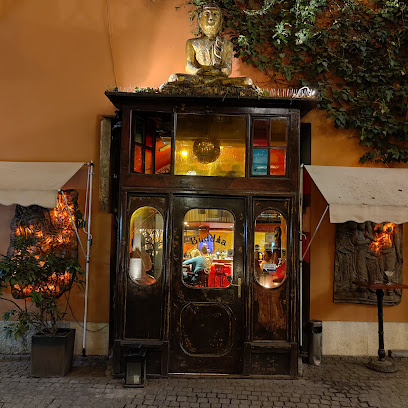
Pub Polski
Experience authentic Polish brews and local flavors at Pub Polski, a vibrant brewpub in Kraków's historic Rynek Główny.

Vis a Vis. Drink-bar
Experience the lively atmosphere of Vis a Vis, a premier pub in Kraków serving a diverse range of drinks in a historic setting.

Local Phrases
-
- HelloCześć
[che-shch] - GoodbyeDo widzenia
[do veed-zen-ya] - YesTak
[tak] - NoNie
[nye] - Please/You're welcomeProszę
[pro-sheh] - Thank youDziękuję
[jen-koo-yeh] - Excuse me/SorryPrzepraszam
[psh-eh-prah-sham] - How are you?Jak się masz?
[yak sheh mah-sh] - Fine. And you?Dobrze. A ty?
[dob-zheh. ah tee] - Do you speak English?Czy mówisz po angielsku?
[chi mo-veesh po an-gyel-skoo] - I don't understandNie rozumiem
[nye roh-zoo-myem]
- HelloCześć
-
- I'd like to see the menu, pleaseChciałbym zobaczyć menu, proszę
[hchya-wbim zo-bah-chich meh-noo, pro-sheh] - I don't eat meatNie jem mięsa
[nye yem myen-sah] - Cheers!Na zdrowie!
[nah zdrov-yeh] - I would like to pay, pleaseChciałbym zapłacić, proszę
[hchya-wbim zah-pla-chich, pro-sheh]
- I'd like to see the menu, pleaseChciałbym zobaczyć menu, proszę
-
- Help!Pomocy!
[po-mo-tsi] - Go away!Idź sobie!
[eej soh-byeh] - Call the Police!Zadzwoń po policję!
[zad-zvon po po-leets-yeh] - Call a doctor!Zadzwoń po lekarza!
[zad-zvon po leh-kar-zah] - I'm lostZgubiłem się
[zgoo-byem sheh] - I'm illJestem chory
[yes-tem hoh-ri]
- Help!Pomocy!
-
- I'd like to buy...Chciałbym kupić...
[hchya-wbim koo-peech] - I'm just lookingTylko się rozglądam
[til-ko shyeh rohz-gwah-dam] - How much is it?Ile to kosztuje?
[ee-leh to kosh-too-yeh] - That's too expensiveTo jest za drogie
[to yest zah dro-gyeh] - Can you lower the price?Czy możesz obniżyć cenę?
[chi mo-zhesh ob-nee-zhich tseh-neh]
- I'd like to buy...Chciałbym kupić...
-
- What time is it?Która jest godzina?
[ktoo-ra yest goh-dzee-nah] - It's one o'clockJest pierwsza
[yes-tem pyer-vshah] - Half past (10)Pół do dziesiątej
[pool do dzyeh-syahn-tey] - MorningRano
[rah-no] - AfternoonPopołudnie
[po-po-woo-dnyeh] - EveningWieczór
[vyeh-choor] - YesterdayWczoraj
[v-cho-rye] - TodayDzisiaj
[jiz-yay] - TomorrowJutro
[yoo-tro] - 1Jeden
[yeh-den] - 2Dwa
[dva] - 3Trzy
[tshy] - 4Cztery
[ch-ter-eh] - 5Pięć
[pyench] - 6Sześć
[sheh-shch] - 7Siedem
[syeh-dem] - 8Osiem
[oh-shyem] - 9Dziewięć
[jyev-nyench] - 10Dziesięć
[dzyeh-syench]
- What time is it?Która jest godzina?
-
- Where's a/the...?Gdzie jest...
[g-jeh yest] - What's the address?Jaki jest adres?
[yah-kee yest ah-dres] - Can you show me (on the map)?Czy możesz mi pokazać (na mapie)?
[chi mo-zhesh mee po-ka-zach (na ma-pyeh)] - When's the next (bus)?Kiedy jest następny (autobus)?
[kyeh-dey yest nas-tep-ny (ow-toh-boos)] - A ticket (to ....)Bilet (do ....)
[bee-let (do)]
- Where's a/the...?Gdzie jest...
History of Stare Miasto (Old Town)
-
The history of Stare Miasto is steeped in legend, with tales such as that of the Wawel Dragon, which is said to have lived in a cave beneath Wawel Hill. This legend dates back to the 10th century, when Kraków began to emerge as a significant settlement. The dragon's defeat by Prince Krak is said to symbolize the founding of the city itself.
-
In 1257, Kraków was granted city rights under Magdeburg Law, leading to the establishment of the Main Market Square (Rynek Główny) as a central hub for trade and commerce. This square, one of the largest medieval town squares in Europe, became a focal point of social and economic life, featuring the iconic Cloth Hall (Sukiennice) as a center for cloth and goods trading.
-
During the 15th and 16th centuries, Kraków flourished as the capital of Poland and a center of Renaissance culture. The construction of St. Mary's Basilica, with its stunning wooden altarpiece by Veit Stoss, and the development of the Jagiellonian University in 1364, exemplify the cultural and educational advancements of this period.
-
The late 18th century saw Poland partitioned among Russia, Prussia, and Austria, which significantly altered Kraków's status. Under Austrian rule, Kraków became a Free City in 1815, leading to a unique cultural revival and the establishment of several institutions, including the Academy of Fine Arts, which contributed to the artistic heritage of Stare Miasto.
-
Before World War II, Kraków was a vibrant city with a substantial Jewish population. The Jewish quarter of Kazimierz, located adjacent to Stare Miasto, was a center of Jewish culture and religion. The war brought devastation, with many Jewish residents deported or killed during the Holocaust, profoundly impacting the cultural fabric of the neighborhood.
-
After World War II, Stare Miasto underwent significant reconstruction to restore its historical architecture. The restoration efforts following the war and the fall of communism in 1989 spurred a cultural renaissance, attracting artists, historians, and tourists, leading to the revitalization of Kraków's rich heritage and the recognition of Stare Miasto as a UNESCO World Heritage Site in 1978.
Stare Miasto (Old Town) Essentials
-
Stare Miasto (Old Town) is centrally located in Krakow and is easily accessible from various neighbourhoods. If you're coming from the main train station (Kraków Główny), it's just a 15-minute walk. Alternatively, you can take tram lines 1, 2, 3, 4, or 8 from the station to the 'Teatr Bagatela' stop, which is near the Old Town. Buses also serve the area with routes connecting to nearby districts; check local schedules for the most convenient options.
-
Stare Miasto is pedestrian-friendly, making it easy to explore on foot. The area is compact, and most attractions are within walking distance. Public transport, including trams and buses, operates efficiently for longer distances. Bicycles can be rented through local services, and cycling is a pleasant way to explore the nearby Vistula Boulevards. Taxis and ride-sharing services are also available for quick transport.
-
Stare Miasto is generally safe for tourists, but typical precautions should be observed. Petty crimes like pickpocketing can occur in crowded areas, especially near popular tourist attractions like the Main Market Square and Wawel Castle. Avoid poorly lit streets at night and be cautious in busy areas. It's advisable to keep your belongings secure and be aware of your surroundings.
-
In case of an emergency, dial 112 for police, fire, or medical assistance. The nearest hospital is located near the Old Town, and pharmacies are available for minor health issues. It’s also wise to have travel insurance that covers medical emergencies. For lost items or theft, report to the local police at the nearest station.
-
Fashion: Do wear comfortable shoes for walking; Don't wear revealing clothing, especially in religious sites. Religion: Do respect local customs and traditions, especially in churches; Don't take photos where prohibited. Public Transport: Do validate your ticket before boarding; Don't eat or drink on trams or buses. Greetings: Do greet with a friendly 'Dzień dobry' (Good day); Don't assume everyone speaks English. Eating & Drinking: Do try local dishes like pierogi; Don't be rude when declining food or drink offered to you.
-
To experience Stare Miasto like a local, visit the historic cafés and bakeries away from the main tourist paths, where you can enjoy traditional Polish pastries. Attend local events and festivals if your visit coincides with them. Engage with local guides for tours that share hidden gems of Old Town. A stroll along the Vistula River at sunset offers a beautiful view of the castle and is a favorite among locals. Don’t miss out on the local markets for fresh produce and handmade crafts.
Trending Landmarks in Stare Miasto (Old Town)
-
Rynek Główny
-
St. Mary's Basilica
-
Stary Kleparz
-
Sukiennice
-
St. Florian's Gate
-
Rynek Underground Museum
-
Kraków Barbican
-
Bazylika Franciszkanów św. Franciszka z Asyżu
-
Historical Museum of the City of Kraków
-
Lost Souls Alley
-
Plac Wszystkich Świętych
-
Town Hall Tower
-
Adam Mickiewicz Monument, Kraków
-
Old Town of Kraków
-
Eros Bendato
Nearby Cities to Stare Miasto (Old Town)
-
Things To Do in Bielsko-Biala
-
Things To Do in Tarnow
-
Things To Do in Zakopane
-
Things To Do in Gliwice
-
Things To Do in Czestochowa
-
Things To Do in Kielce
-
Things To Do in Poprad
-
Things To Do in Ostrava
-
Things To Do in Žilina
-
Things To Do in Martin
-
Things To Do in Rzeszow
-
Things To Do in Prešov
-
Things To Do in Banská Bystrica
-
Things To Do in Opole
-
Things To Do in Radom













